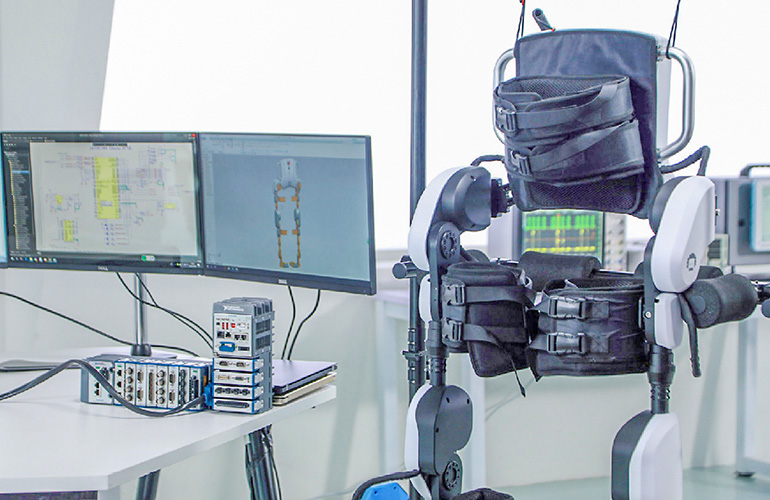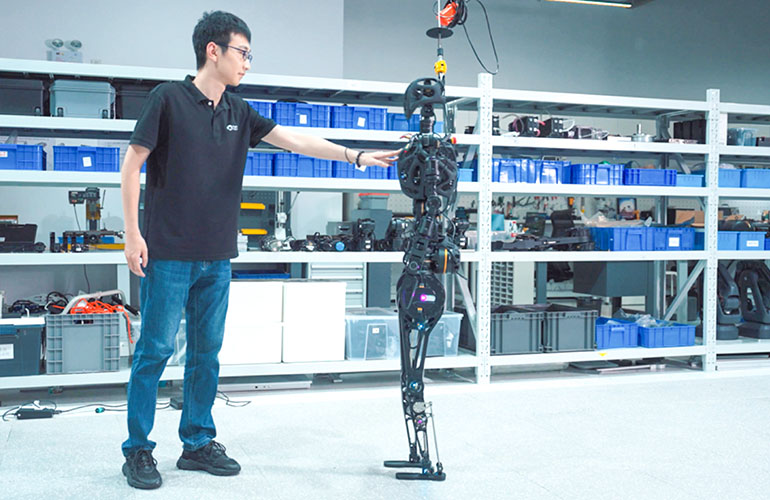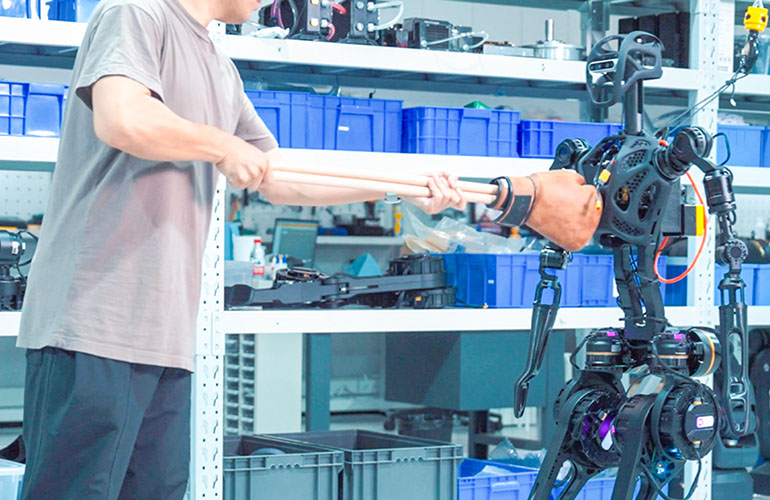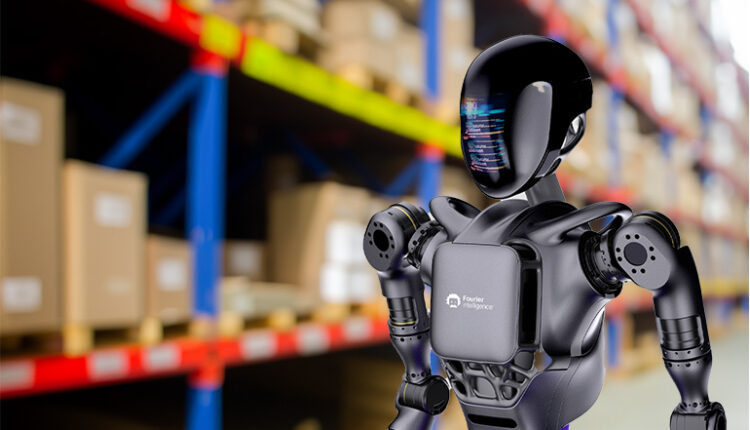|
Listen to this article  |
Fourier Intelligence has been manufacturing exoskeletons and rehabilitation devices since 2017. The Singapore-based company launched its first generation of humanoid robots this year, designated the GR-1.
The humanoid platform includes 40 degrees of freedom distributed throughout its body, which measures 1.65 m (5 ft., 5 in.) in height and weighs 55 kg (121.2 lb.). The joint module that is fitted at the hip of the robot is capable of producing a peak torque of 300 Nm, which allows it to walk at a speed of 5 kph (3.1 mph) and carry goods that weigh 50 kg (110.2 lb.).
Making the leap from exoskeleton development to humanoid design is a logical progression, as the humanoid platform shares many of the mechanical and electrical design elements that Fourier developed for its core product line. Actuation is a core competency of the company, and by designing and building actuators, it claimed that it can optimize the cost/performance of the system.

The Exomotus exoskeleton is designed to help patients with spinal injuries learn to walk again. | Credit: Fourier Intelligence
With the launch of GR-1, Fourier also unveiled the Fourier Smart Actuator (FSA), an all-in-one actuator series. Not only is the actuator unit high-performance, but it is also cost-effective, which the company said is key to its design goals and market price for the GR-1.
Fourier developed the Exoskeleton Robot Open Platform (EXOPS) with National Instruments (NI) and the University of Melbourne. EXOPS is intended to be a development platform for schools, research and development institutions, and clinical centers.
Fourier is exploring ways to deploy this device to use cases such as disaster relief and response, senior care, and household service. It includes a large multimodal language model comparable to that which supports ChatGPT. This enables the robot to program itself to execute tasks, it asserted.
GR-1 also features an “integrated emotion AI module,” a high-resolution oval display, and circular microphone array for its voice-recognition system. These features make human-machine interactions more natural, Fourier told The Robot Report.
Fourier ready to start production
The company recently announced that it is ready to launch the production version of the GR-1. The robot is equipped with depth cameras in its head and torso.
In addition, the GR-1 is equipped with visual algorithms to perceive its immediate surroundings. This allows the robot to rapidly recognize different objects and people, as well as realize functions including obstacle avoidance and visual task guidance.

The GR-1 humanoid robot is designed to operate within a human-centric world. | Credit: Fourier Intelligence
The GR-1’s robotic hands have 11 degrees of freedom that allow it to securely grasp items, said Fourier. The user can direct the robot to retrieve items.
The hands imitate the range of motion in human fingers when grabbing cylindrical and round objects, such as bottled water and electric screwdrivers. GR-1 autonomously calculates the motion paths for grasping using visual feedback.
In addition, Fourier said it has engineered the robot to securely grasp objects of different dimensions and configurations by adjusting its gripping force, enabling it to gently handle any item.
The system also works with fleet management software, so users can coordinate multiple GR-1 units from a central point. This will include mission assignments, task assignments, and the tracking of fleet operations.
The GR-1 also has a teleoperation mode for use with an augmented reality headset and 5G technologies.

Fourier Intelligence designed the GR-1 humanoid robot to react to the world around it. | Credit: Fourier Intelligence
Market opportunities open for GR-1
Fourier said it expects to sell the GR-1 for applications such as research and education, concierge and guiding, entertainment and exhibition, industrial production and logistics, healthcare and rehabilitation, safety inspection, household service, and companionship. The company already has a sales team and partner channel established for its rehabilitation offerings.
No price has yet been announced for the production unit.
Humanoid robots got a lot of attention this past year, as developers including Apptronik, Boston Dynamics, Figure AI, Sanctuary AI, Tesla, and Unitree demonstrated progress with dexterous manipulation and bipedal locomotion. Most are initially intended for applications in logistics and manufacturing, and Agility Robotics is in commercial trials with Amazon and GXO Logistics.
The global market for humanoid robots could experience a compound annual growth rate (CAGR) of 46.5%, from $1.7 billion in 2023 to $36.1 billion by 2030, projected MarketDigits. It noted demand in healthcare and search-and-rescue use cases.
Technavio was even more bullish, estimating an increase of $16.05 billion from 2022 to 2027 at a CAGR of 53.45%. The research firm noted the potential flexibility of humanoids in industrial settings and said that North America could account for 35% of global market growth.
Credit: Source link


Comments are closed.